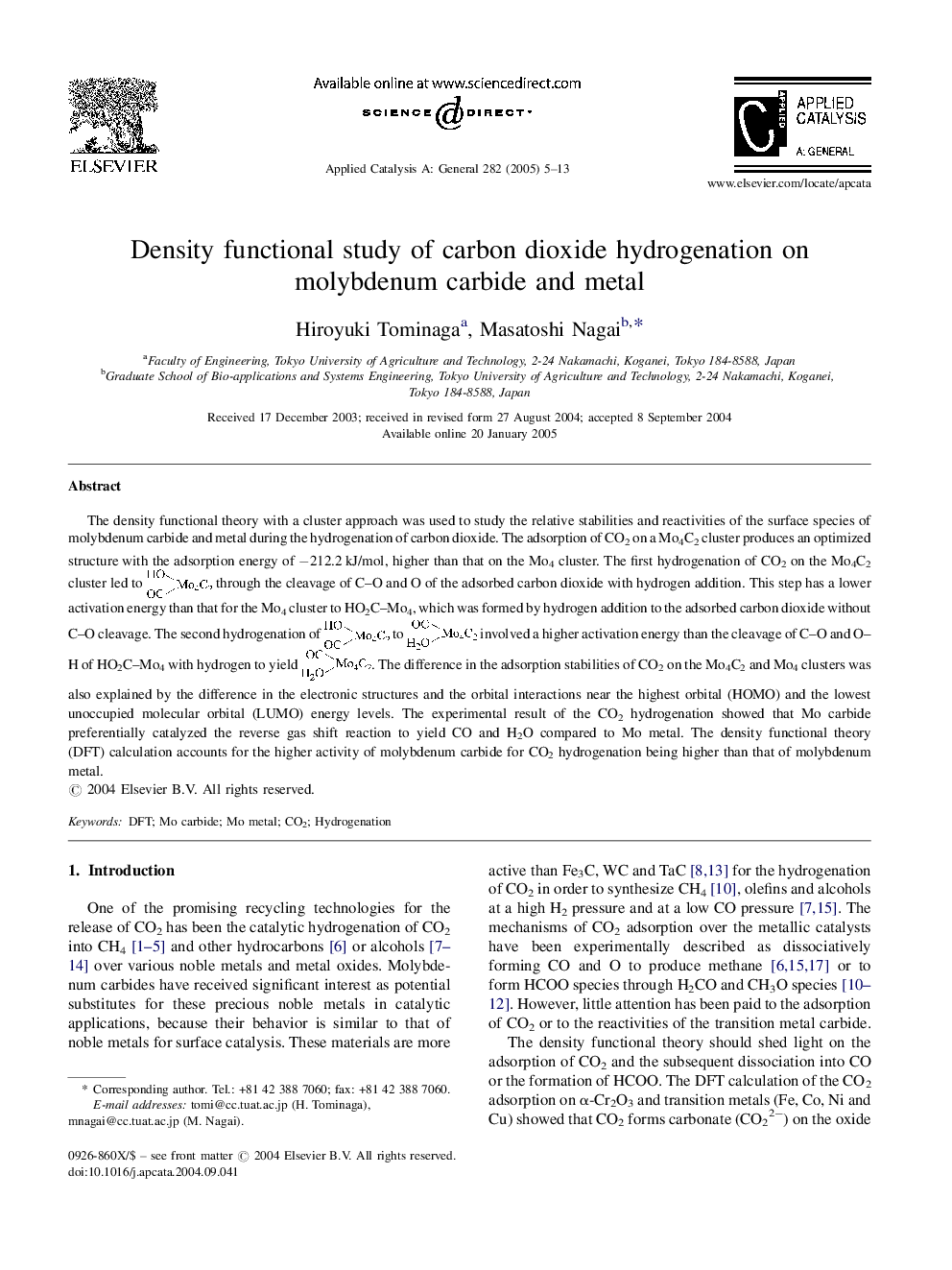| کد مقاله | کد نشریه | سال انتشار | مقاله انگلیسی | نسخه تمام متن |
|---|---|---|---|---|
| 9608032 | 46039 | 2005 | 9 صفحه PDF | دانلود رایگان |
عنوان انگلیسی مقاله ISI
Density functional study of carbon dioxide hydrogenation on molybdenum carbide and metal
دانلود مقاله + سفارش ترجمه
دانلود مقاله ISI انگلیسی
رایگان برای ایرانیان
موضوعات مرتبط
مهندسی و علوم پایه
مهندسی شیمی
کاتالیزور
پیش نمایش صفحه اول مقاله

چکیده انگلیسی
The density functional theory with a cluster approach was used to study the relative stabilities and reactivities of the surface species of molybdenum carbide and metal during the hydrogenation of carbon dioxide. The adsorption of CO2 on a Mo4C2 cluster produces an optimized structure with the adsorption energy of â212.2Â kJ/mol, higher than that on the Mo4 cluster. The first hydrogenation of CO2 on the Mo4C2 cluster led to through the cleavage of CO and O of the adsorbed carbon dioxide with hydrogen addition. This step has a lower activation energy than that for the Mo4 cluster to HO2CMo4, which was formed by hydrogen addition to the adsorbed carbon dioxide without CO cleavage. The second hydrogenation of to involved a higher activation energy than the cleavage of CO and OH of HO2CMo4 with hydrogen to yield . The difference in the adsorption stabilities of CO2 on the Mo4C2 and Mo4 clusters was also explained by the difference in the electronic structures and the orbital interactions near the highest orbital (HOMO) and the lowest unoccupied molecular orbital (LUMO) energy levels. The experimental result of the CO2 hydrogenation showed that Mo carbide preferentially catalyzed the reverse gas shift reaction to yield CO and H2O compared to Mo metal. The density functional theory (DFT) calculation accounts for the higher activity of molybdenum carbide for CO2 hydrogenation being higher than that of molybdenum metal.
ناشر
Database: Elsevier - ScienceDirect (ساینس دایرکت)
Journal: Applied Catalysis A: General - Volume 282, Issues 1â2, 30 March 2005, Pages 5-13
Journal: Applied Catalysis A: General - Volume 282, Issues 1â2, 30 March 2005, Pages 5-13
نویسندگان
Hiroyuki Tominaga, Masatoshi Nagai,